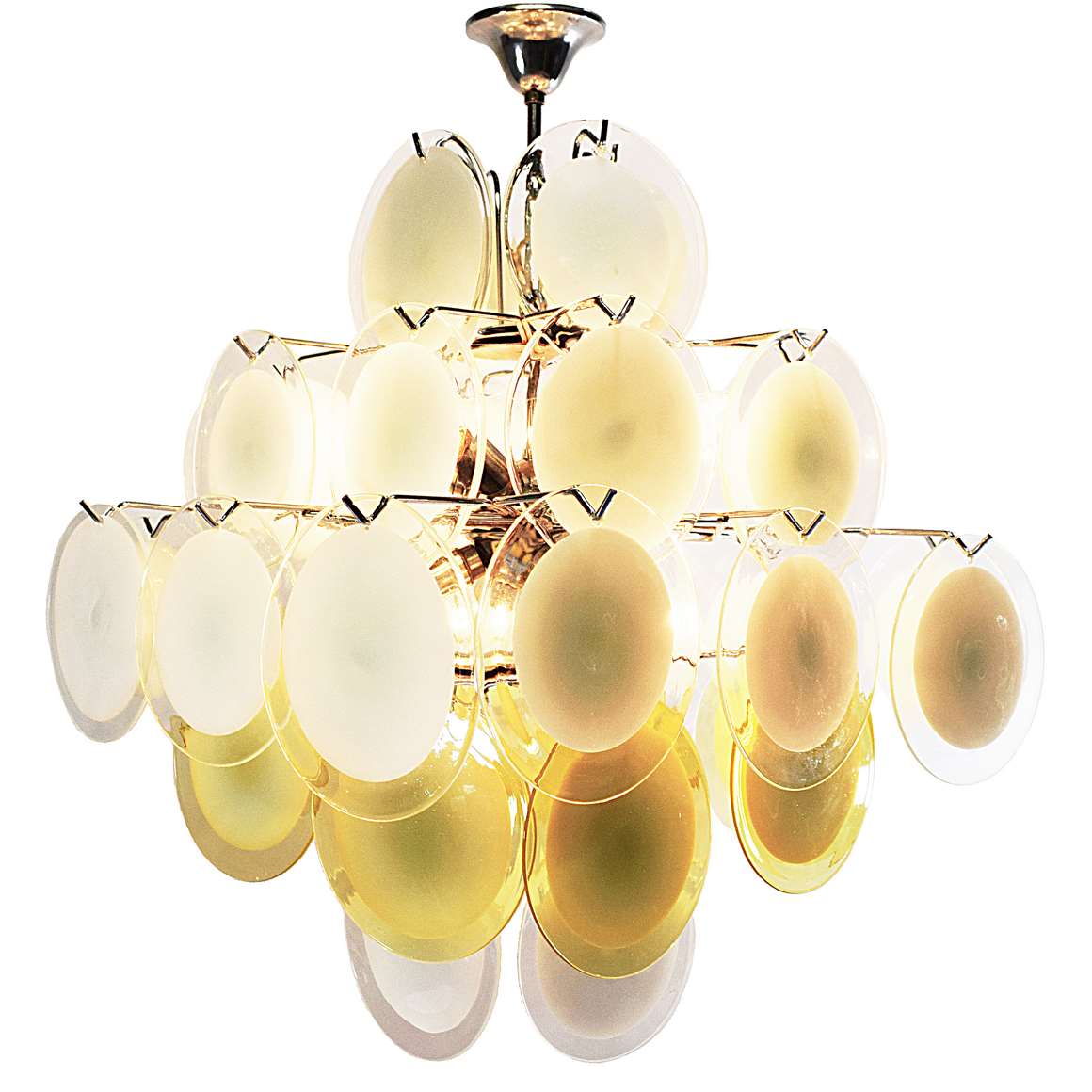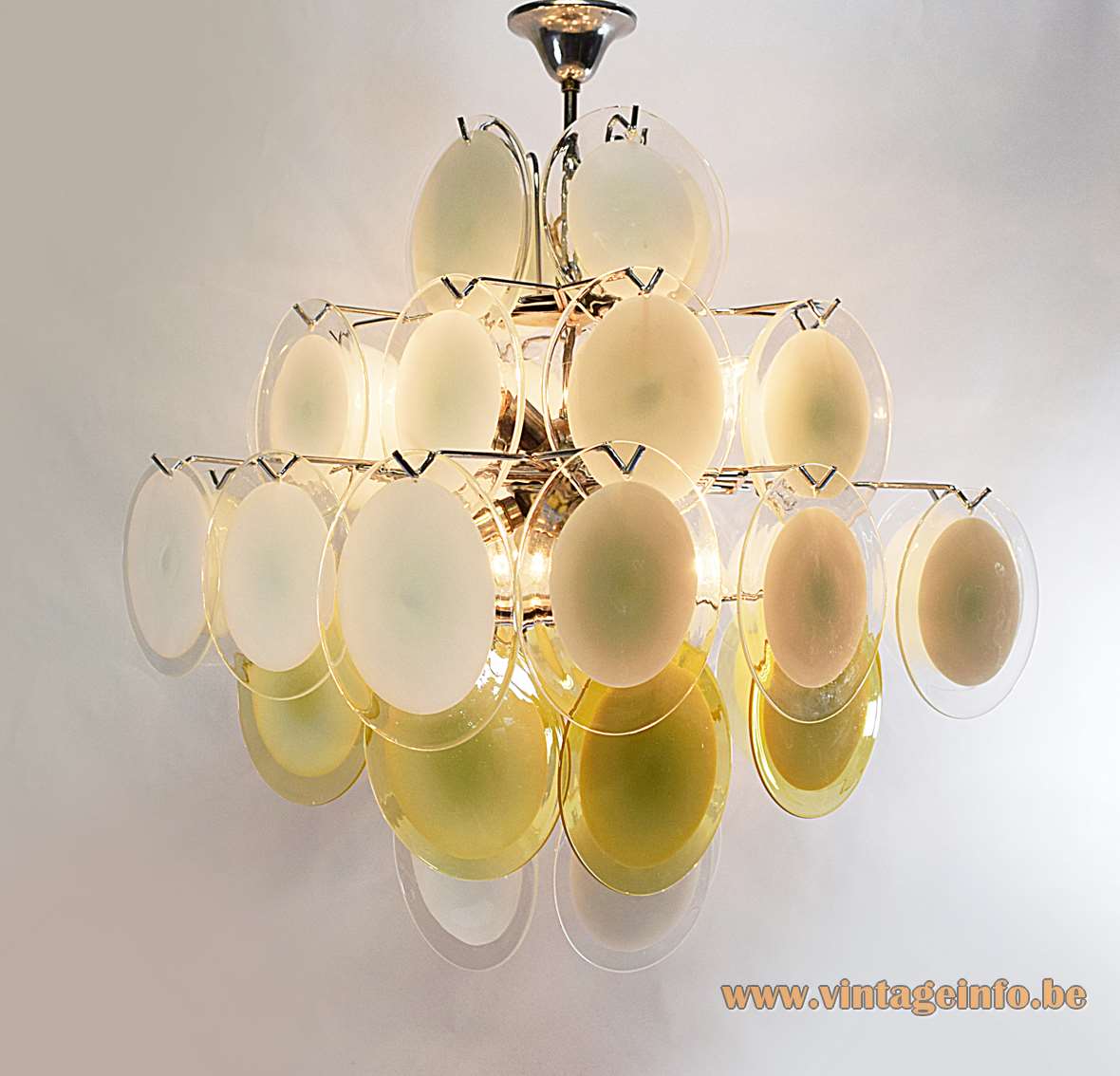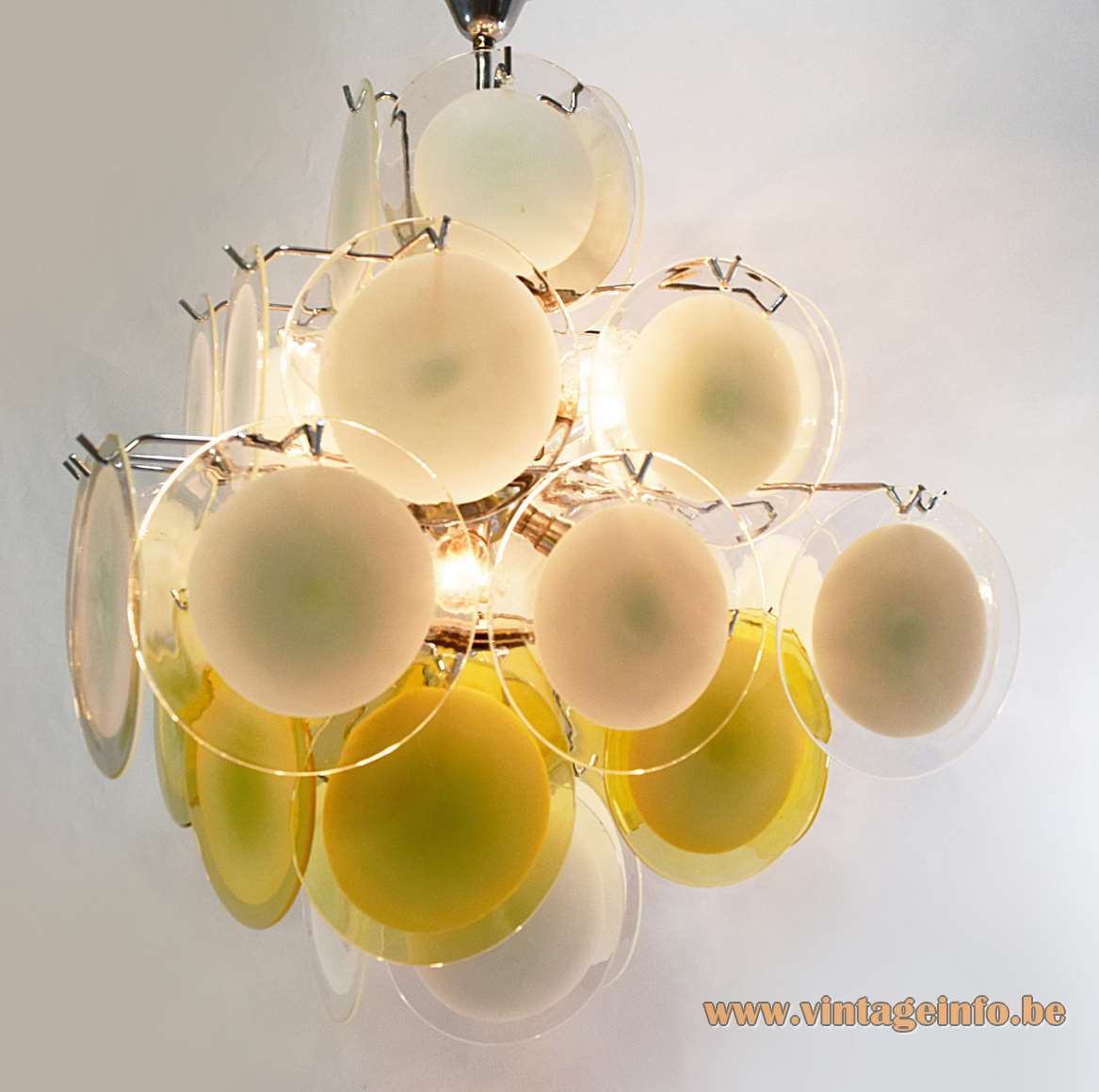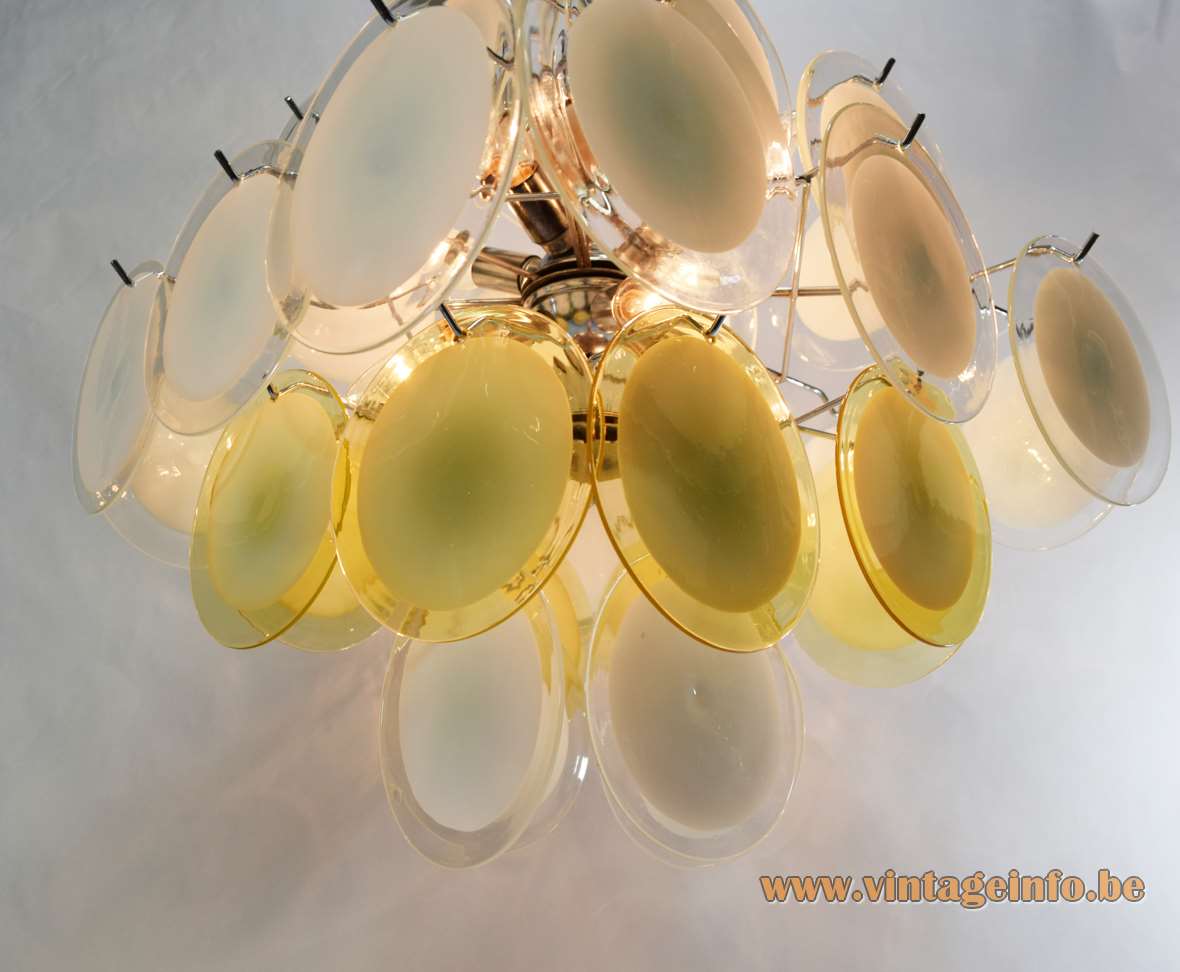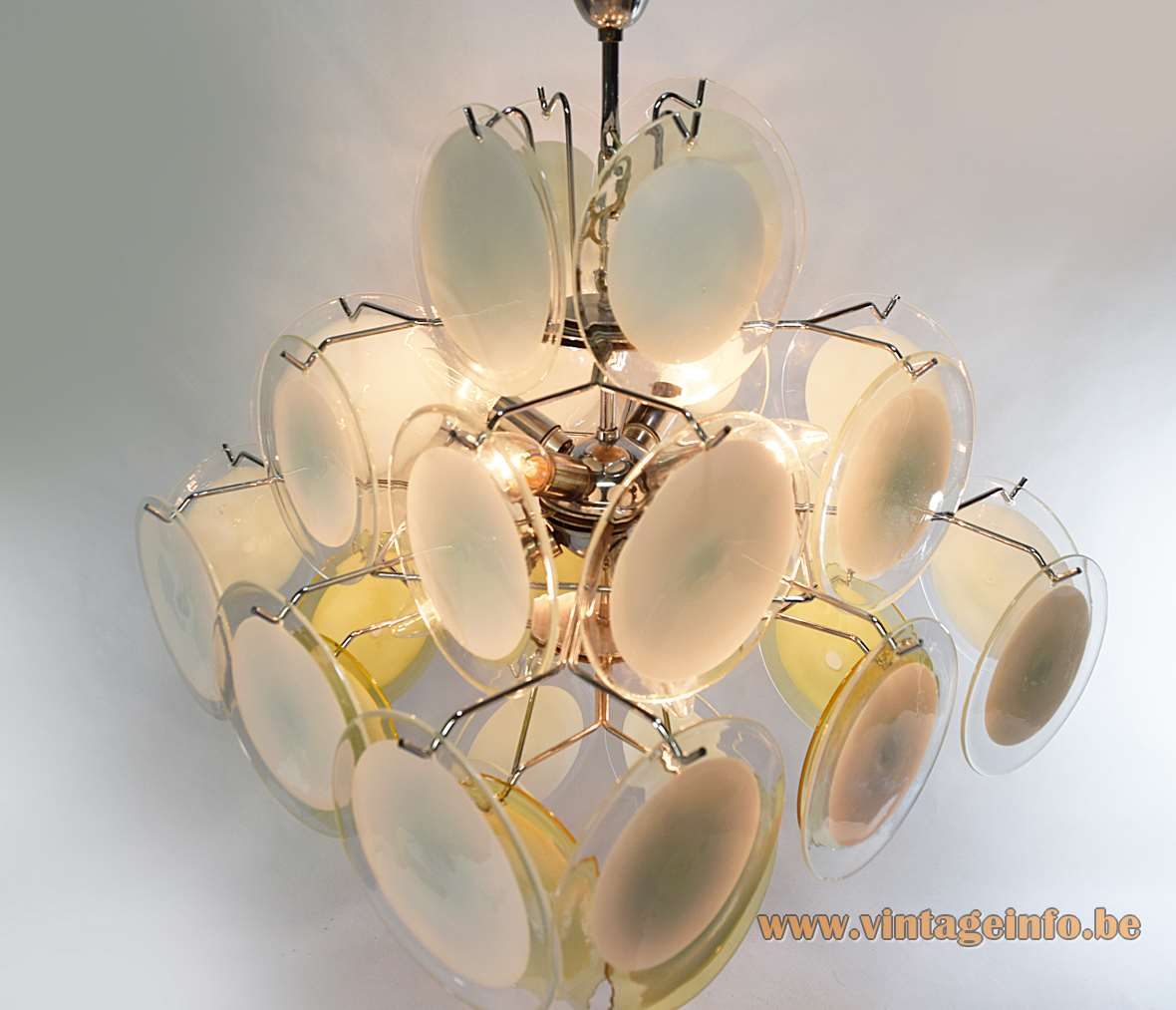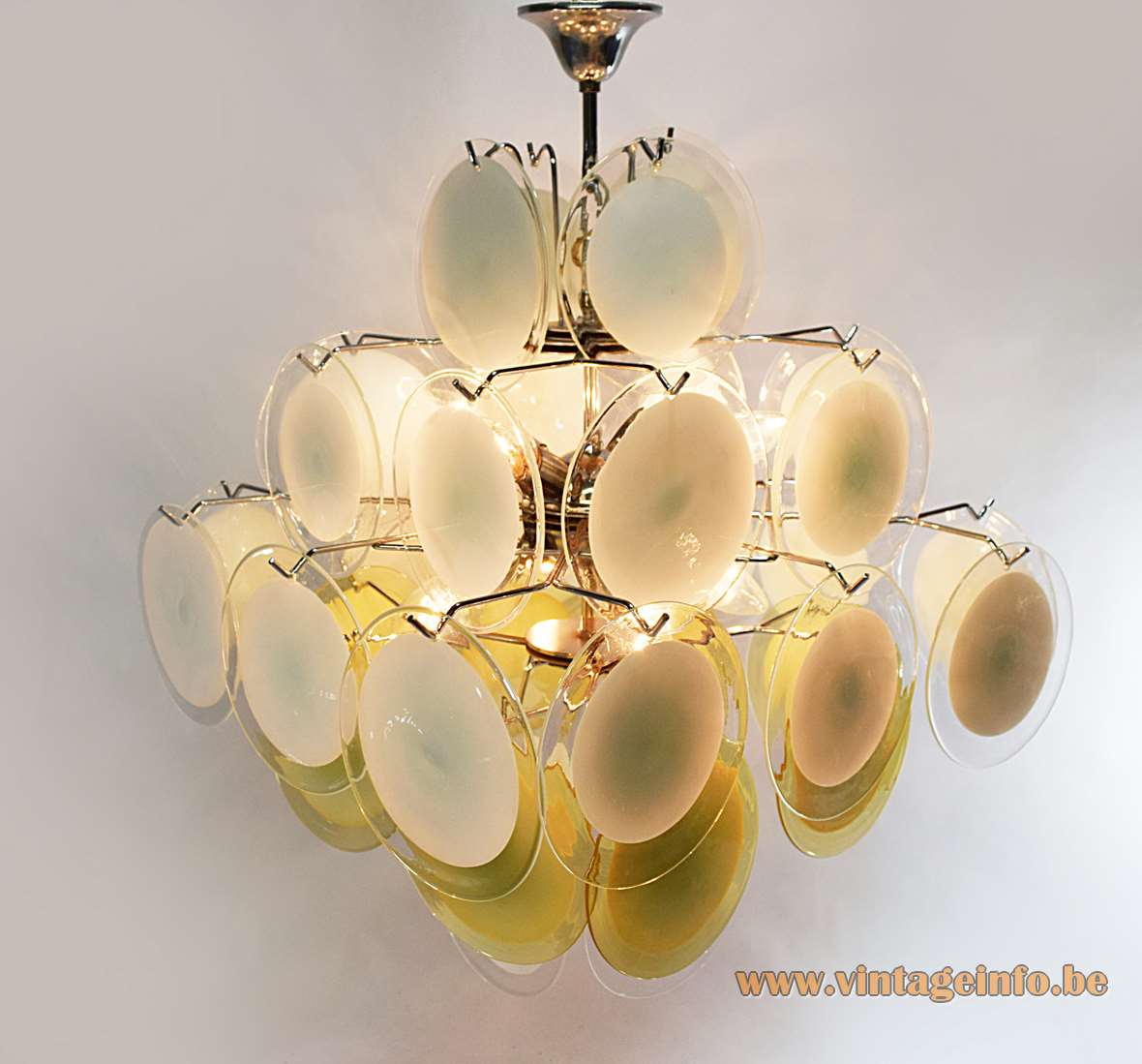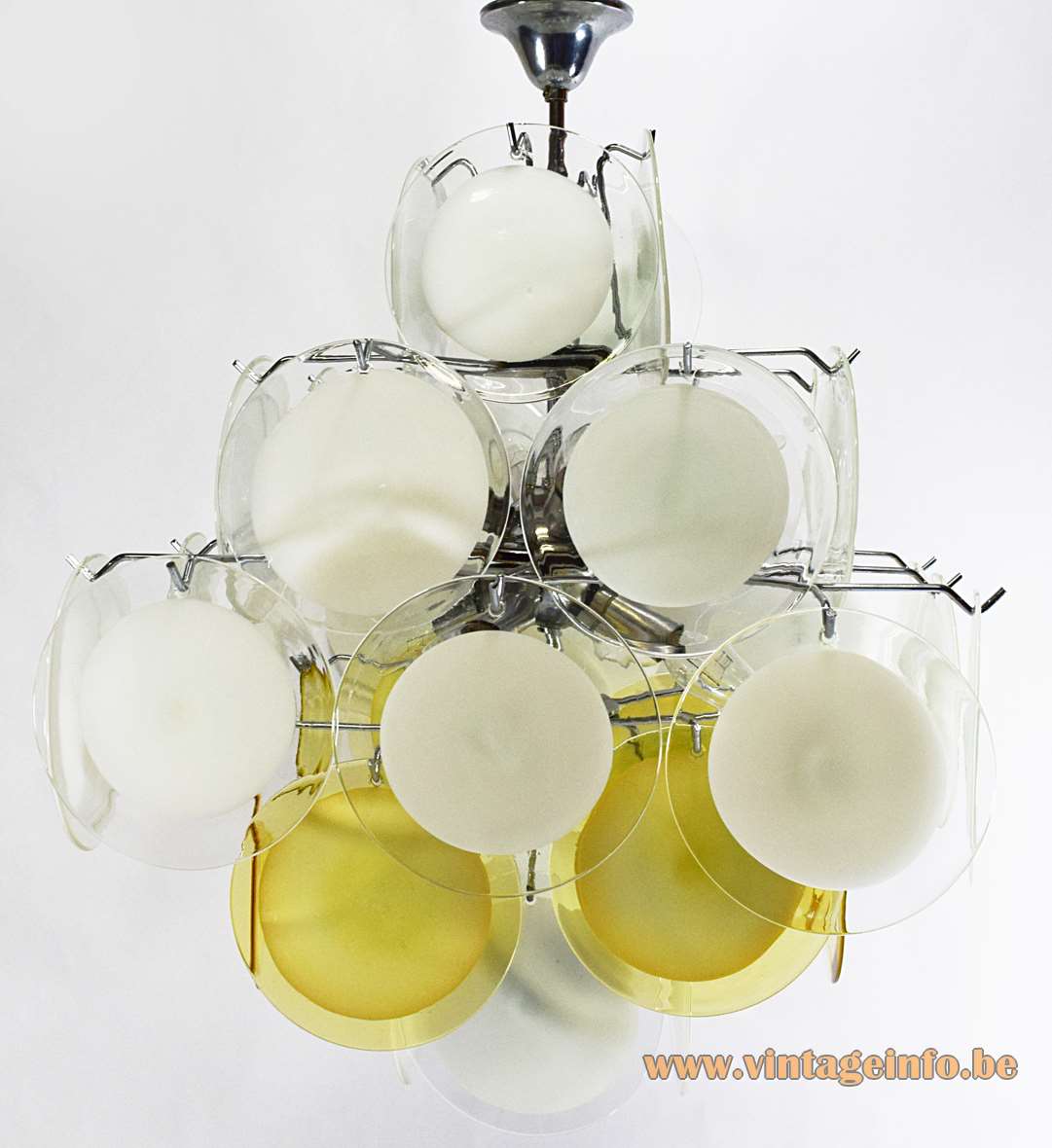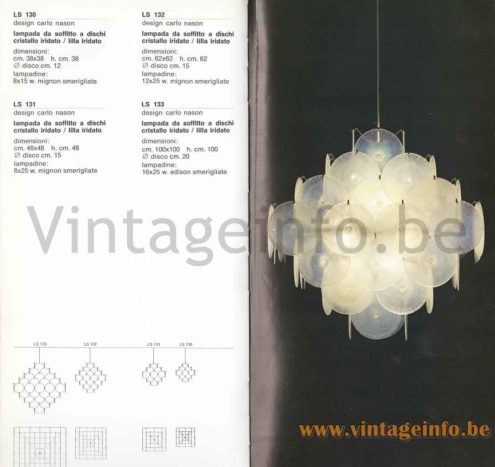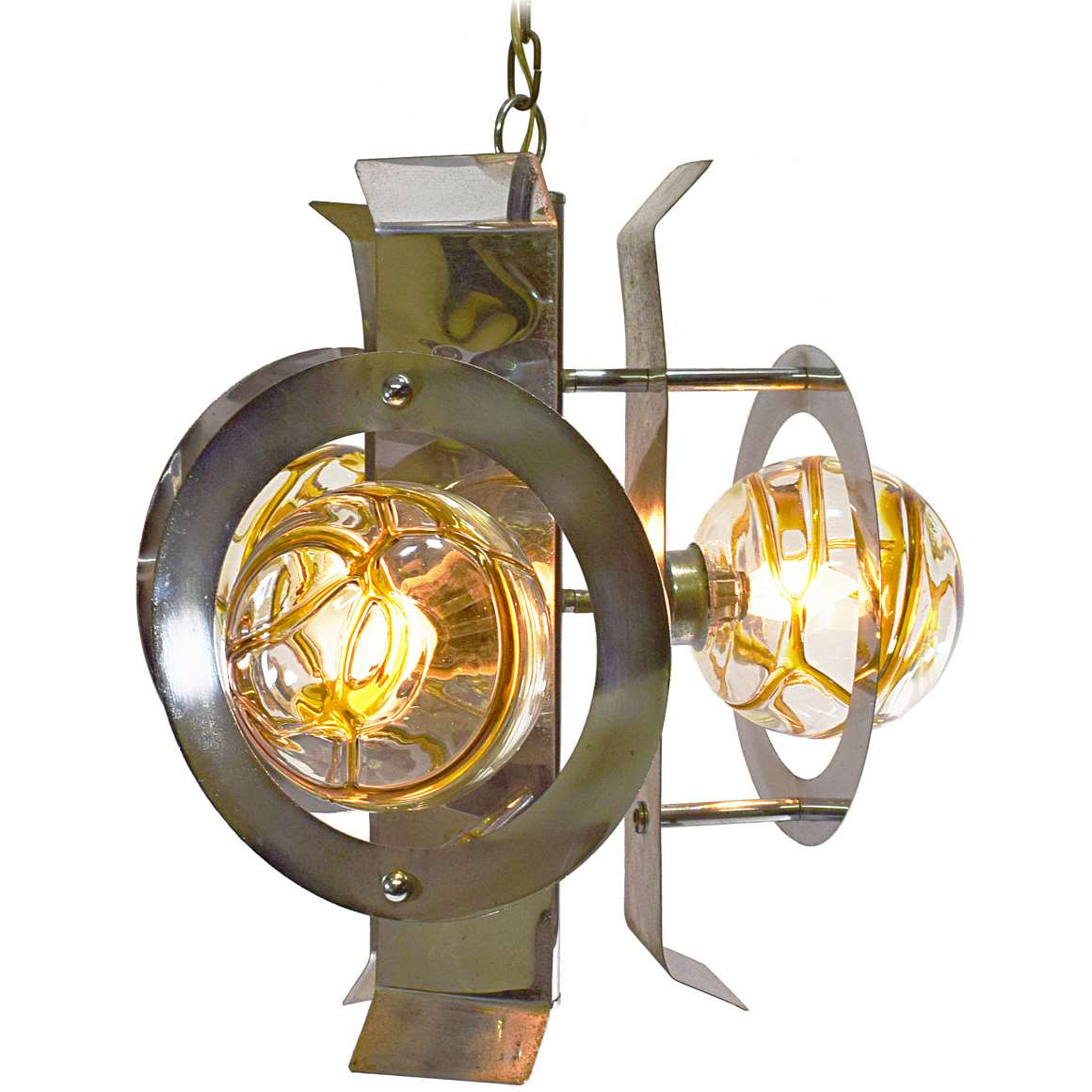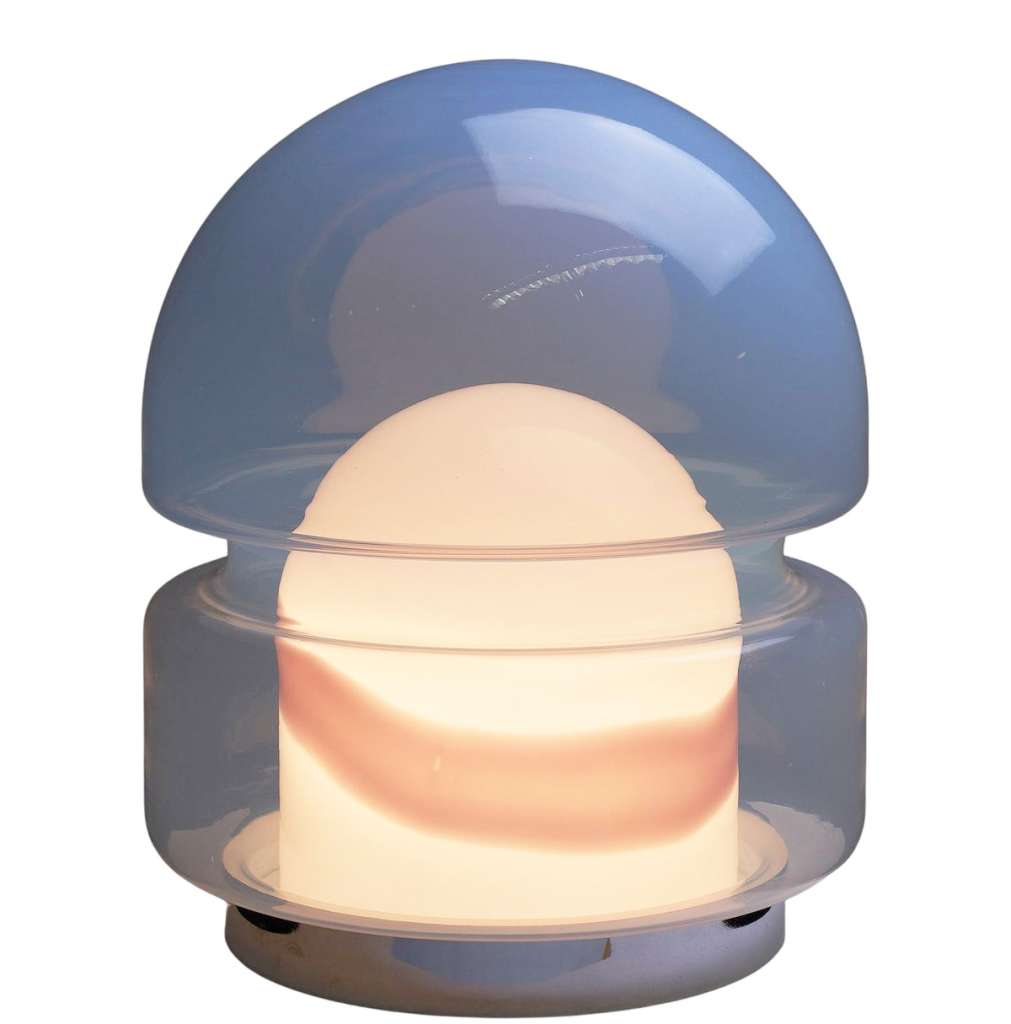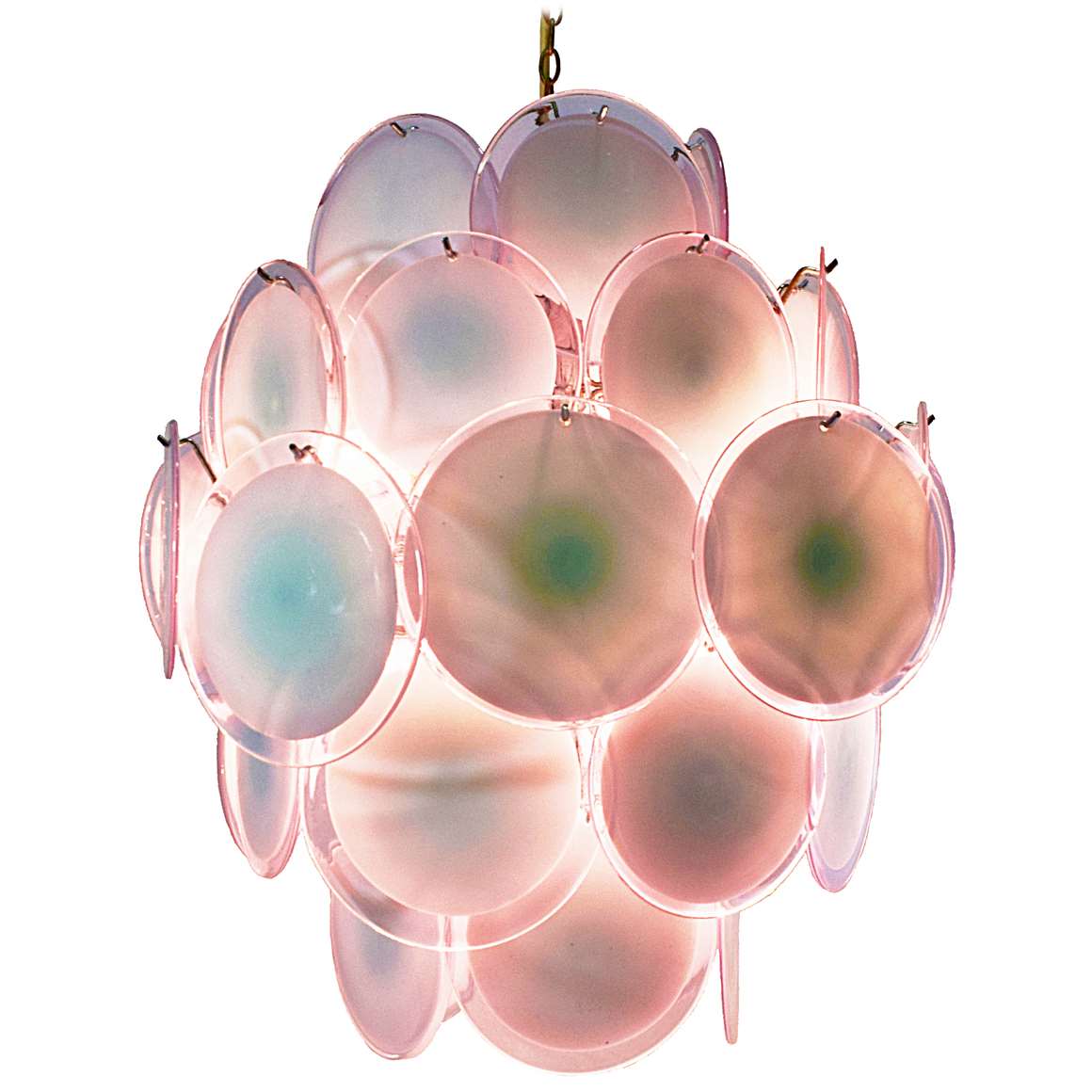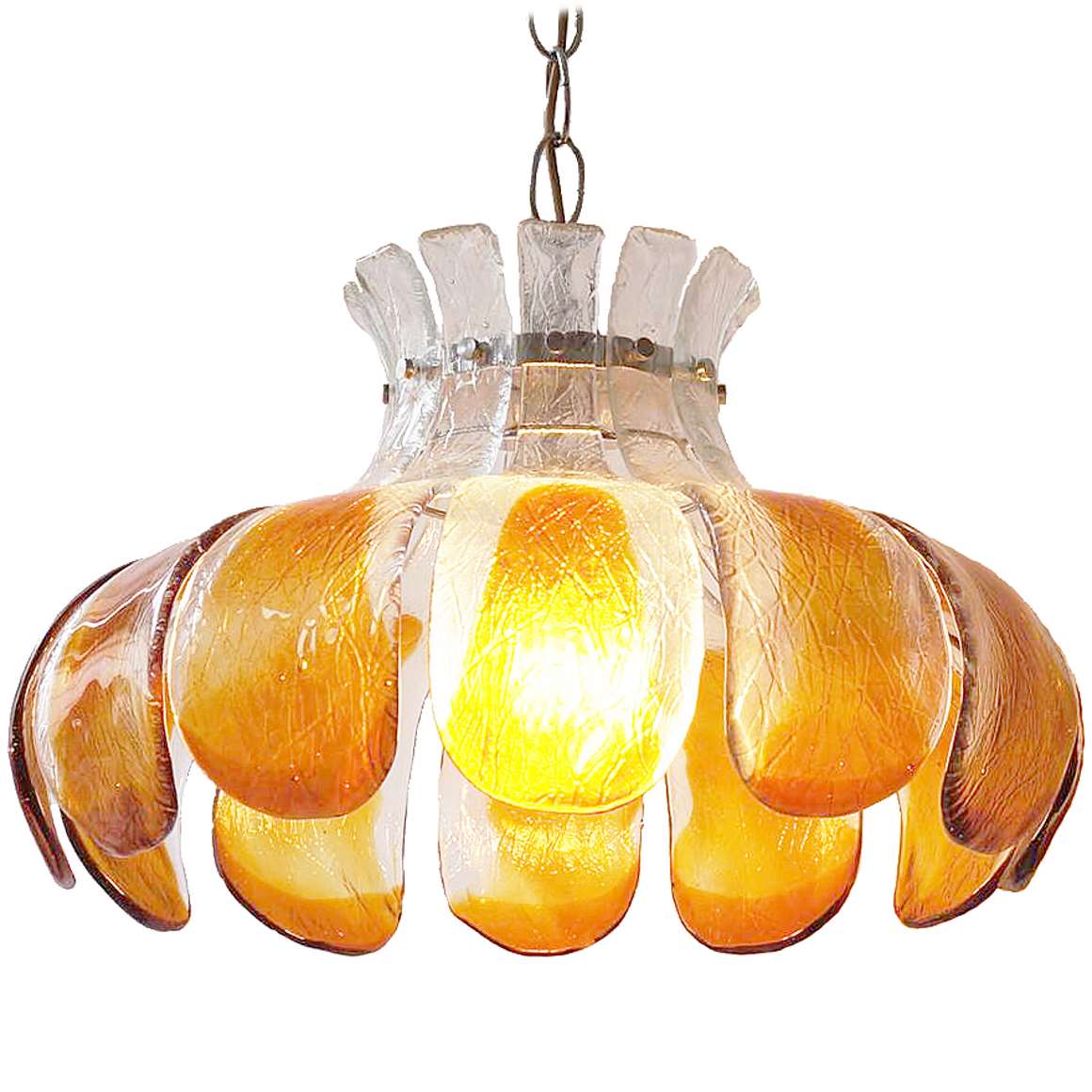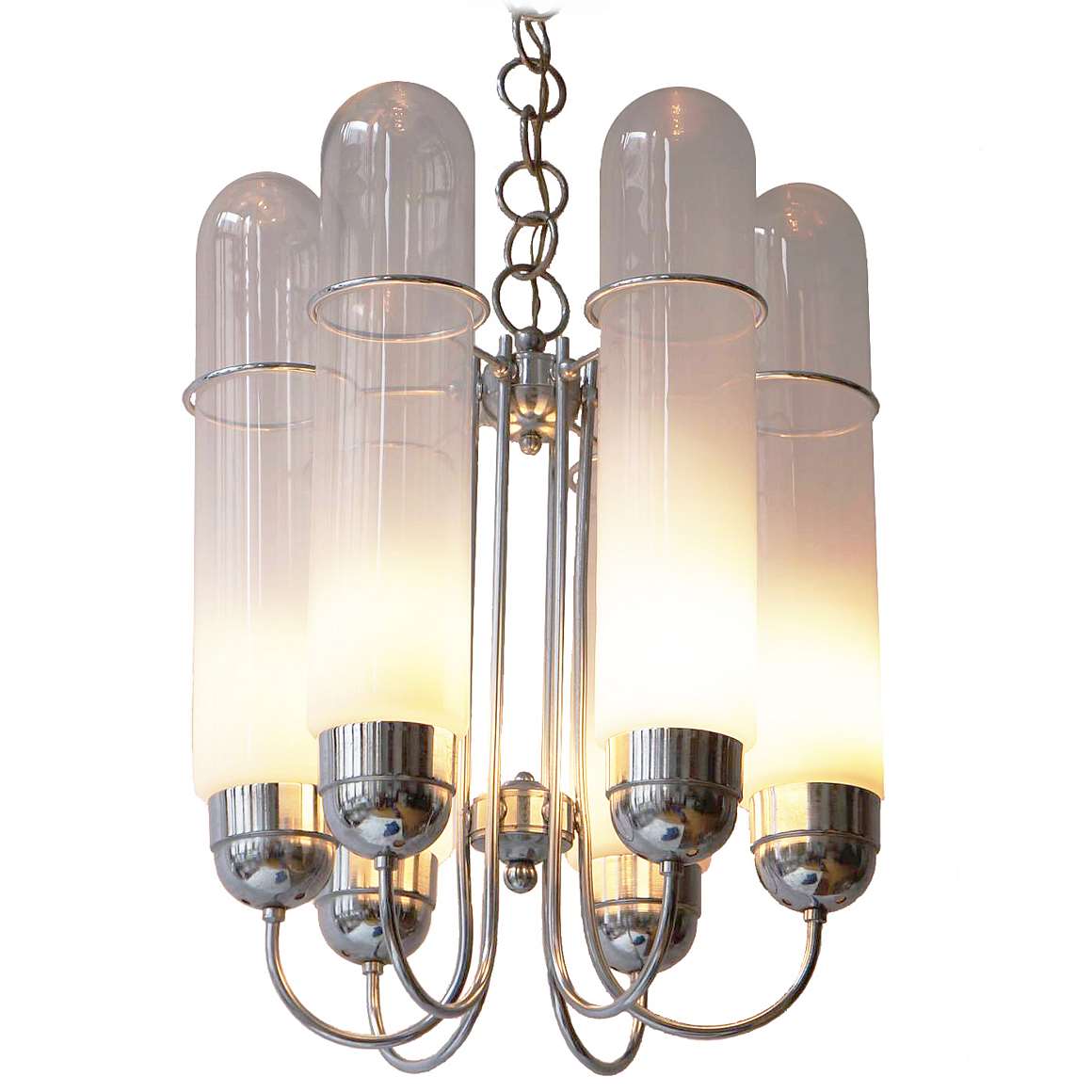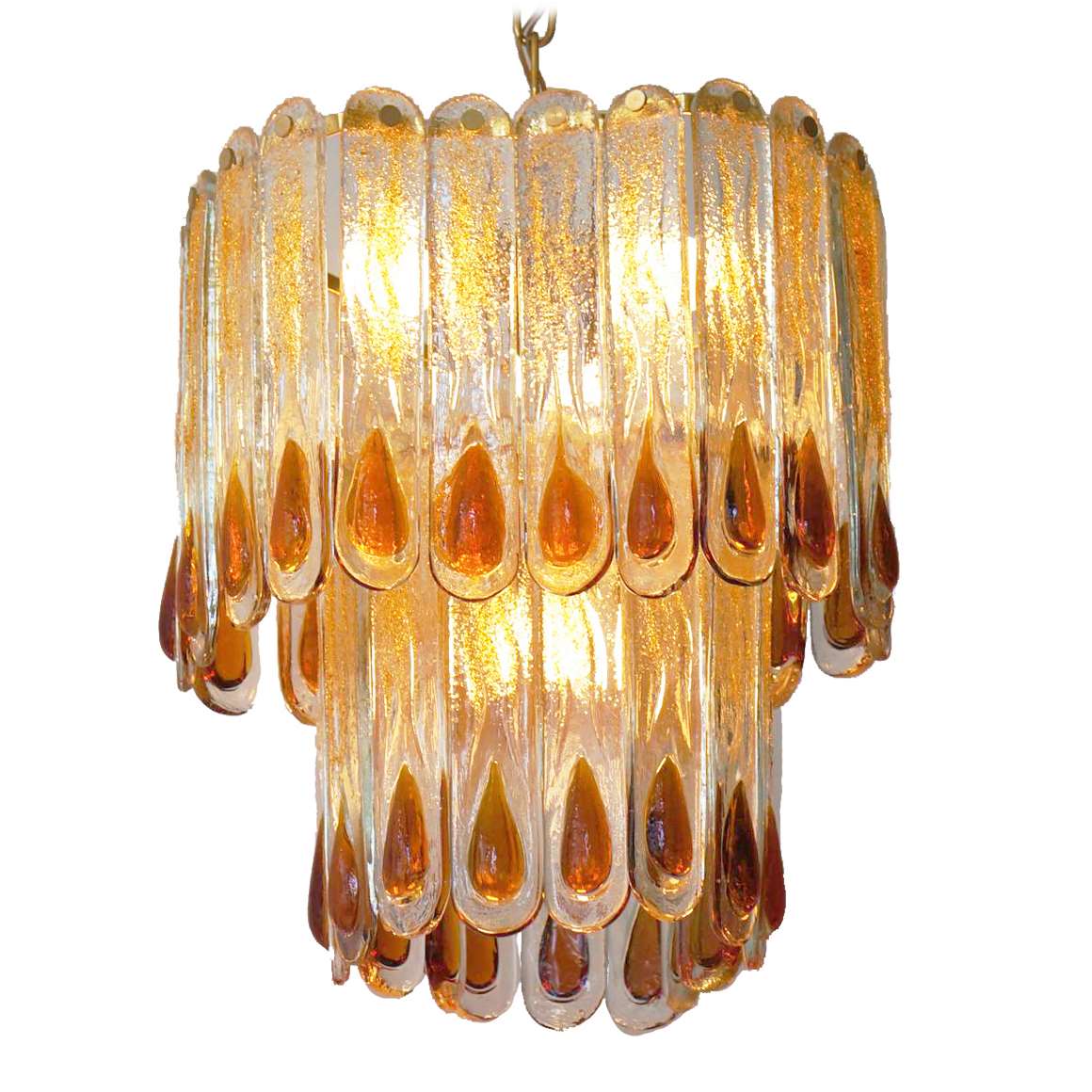White & Amber Discs Chandelier – 1970s AV Mazzega Catalogue Picture
The original design of this many times copied chandeliers: Models LS 130, LS 131, LS 132, LS 133.
Triennale Milan 2015 – Carlo Nason Expo
Carlo Nason – 2019 Interview
Links (external links open in a new window)
Mazzega 1946 (AV Mazzega)
Murano glass blowing – Wikipedia
Glass Museum on the Murano island
I Muranesi – Interviews with great Murano glass artists and designers
Vintageinfo
Multi coloured discs chandelier
Smoked cut glass discs chandelier
Many thanks to Max from AfterMidnight for the catalogue picture.
White & Amber Discs Chandelier
Materials: 36 hand blown crystal Murano glass discs. Metal chromed (iron) wire frame. Chrome chain and canopy. 28 white and 8 amber and yellow discs. Bakelite E14 sockets.
Chain Length: 60 cm / 23.62”
Height: 58 cm / 22.83”
Width: 46 x 46 cm / 18.11 x 18.11”
Electricity: 8 bulbs E14, 8 x 60 watt maximum, 110/220 volt.
Any type of light bulb can be used, but clear or bright bulbs are preferred.
Period: 1950s, 1960s, 1970s – Mid-Century Modern.
Designer: After a Carlo Nason design.
Manufacturer:AV Mazzega, Murano Italy – attributed.
Other versions: This white & amber discs chandelier” was made in many different sizes and colours. Produced with more or less discs, as a wall lamp, a flush mount and a table lamp.
Gino Vistosi – Carlo Nason
Contrary to popular belief, Gino Vistosi was not the designer of these large disc chandeliers. However, he did design a related model in the mid-1960s: the Torcello chandelier. This design featured oval discs in textured glass, produced in several colours. They were in production until the 1980s. The name Torcello refers to one of the earliest inhabited islands in the Venetian lagoon, often described as the mythical birthplace of Venice. You can find a catalogue picture over here.
On the island of Murano, many lighting manufacturers – most of them now long gone – also produced disc chandeliers in this style. The discs were the same size as those designed by Carlo Nason for AV Mazzega. Nason ’s models included the LS 130, LS 131, LS 132, and LS 133 chandeliers, all executed in clear and opaline iridescent glass. As you can see on this page.
These chandeliers became a major success and remained in production for more than 30 years. Today, similar designs are still being produced – so be cautious if you are looking for a genuine vintage example.
AV Mazzega (Mazzega 1946)
AV Mazzega was founded in Murano in 1946 by Angelo Vittorio Mazzega, the namesake of Azienda Vetraria Muranese. Initially devoted to traditional Murano glass, the company shifted in the 1960s toward contemporary lighting design under the leadership of his children Lidia and Gianni Bruno Mazzega.
Gianni Bruno in particular recognized the talent of Carlo Nason, who went on to define the company’s creative direction. With Nason ’s groundbreaking experiments in layered glass and vetro in piastra, AV Mazzega gained international recognition in the 1960s and 1970s. In 1970, the first catalogue was printed. Their lamps became synonymous with Italian design innovation, bridging tradition and modernity.
In 2000, Andrea Mazzega, grandson of the founder, became president. Today the company operates under the name Mazzega 1946, working with leading international designers while continuing to reissue Nason’s classics.
Designers who collaborated with AV Mazzega / Mazzega 1946
Carlo Nason, Aldo Nason, Alberto Nason, Massimo Rioda, Christophe Pillet, Michele De Lucchi, Giovanni Barbato, Paolo Piva, Sam Baron, Gasmi Chafik, Oriano Favaretto, Michelle Liccese, Gianfranco Gianetti, Amerigo Lorini, Claudio Marturano, Paolo Franzin, Anki Gneib, Nigel Coates, Luisa Bocchietto, Gordon Guilaumier, Oriano Favaretto, Jean Marie Massaud, Giovanni Barbato and Riccardo Giovannetti, among others.
Carlo Nason
Carlo Nason was born in Murano in 1935 into one of the island’s oldest glassmaking families. His father, Vincenzo Nason, founded V. Nason & C., where Carlo was introduced to the most refined glassmaking techniques.
Although his formal studies were in economics and administration, his true education came at the furnace, where he mastered traditional skills while developing a passion for design, photography, and graphics. His earliest works from the late 1950s are still preserved today in the collection of the Corning Museum of Glass, New York.
In the 1960s he began working formally for the family glassworks but quickly expanded beyond it, collaborating with other Murano workshops and pursuing a distinctly modern vision. His designs combined craftsmanship and innovation, balancing Murano traditions with the clean forms and modularity of contemporary design.
Collaboration with AV Mazzega
From the mid-1960s until the 1980s, Carlo Nason designed an entire generation of lamps for AV Mazzega. Under Gianni Bruno Mazzega ’s direction, he enjoyed extraordinary creative freedom. He explored vetro in piastra, opaline, pulegoso, and layered glass, developing the poetic, diaphanous lighting effects that became his signature.
Unlike many designers, Nason oversaw the entire production process – from drawings to kiln work and metal fittings – ensuring absolute precision. These years produced numerous icons of Italian design, today regarded as cornerstones of Mazzega’s history.
Collaboration with Kalmar
In the early 1970s, AV Mazzega introduced Nason to Kalmar Franken KG in Vienna. Kalmar, with its tradition of working closely with architects, was then expanding into modern glass lighting. Nason’s minimalist and modular approach proved an ideal match.
For Kalmar he designed systems such as RS-System, Meander and Mare, conceived for both domestic interiors and large-scale architecture. Even more enduring were his decorative series – the famous Tulipan, Citrus, Granada, Sierra, Pagode and Stein collections. Produced with Murano glass and Kalmar’s metal craftsmanship, these ranges became commercial successes across Europe, cementing Kalmar’s reputation in international lighting design.
Other collaborations
Beyond AV Mazzega and Kalmar, Nason designed for Vistosi, De Majo, Leucos, Alt Lucialternative, Gallery Vetri d’Arte, Murano Due, Selenova, Linea GB, IVL, and Gruppo Firme di Vetro, among others. With Lumenform, he created the famous Sona pendant lamp (1970), later reissued by ITre, for which he also designed the popular Opera lamp in the 1990s. For Murano Due, his creations included Bolero, Contessa, Chimera, and Ghost, later entering the Leucos catalogue. At de Majo, he developed the Boccioni vases and the Bilbao lamp, proving his ability to work with materials beyond glass.
His versatility extended beyond lighting: he designed ceramics for Baldelli, ski boots for Garmont, perfume flacons for fashion designers, and served as lighting consultant for Casinos Austria International in Vienna.
Photography and exhibitions
Equally passionate about photography, Nason won numerous competitions during the 1960s and 70s. His images, often commissioned for Murano catalogues, reflected the same modern sensibility as his lamp designs.
In 2015, on his 80th birthday, the Triennale di Milano dedicated a solo exhibition to his work, recognizing him as one of Murano ’s most important postwar designers. His creations are held in major museum collections, including the Museum of Modern Art (MoMA) in New York, the Triennale Design Museum in Milan, and the Corning Museum of Glass in New York, which owns an extensive collection of his work.
Legacy
Carlo Nason has always been a discreet figure, avoiding the spotlight, yet his designs have reached a wide audience—from museum halls to television screens in the 1980s. His career represents the very best of Italian lighting design: rooted in Murano ’s heritage yet always open to innovation, modernity, and international collaboration.
